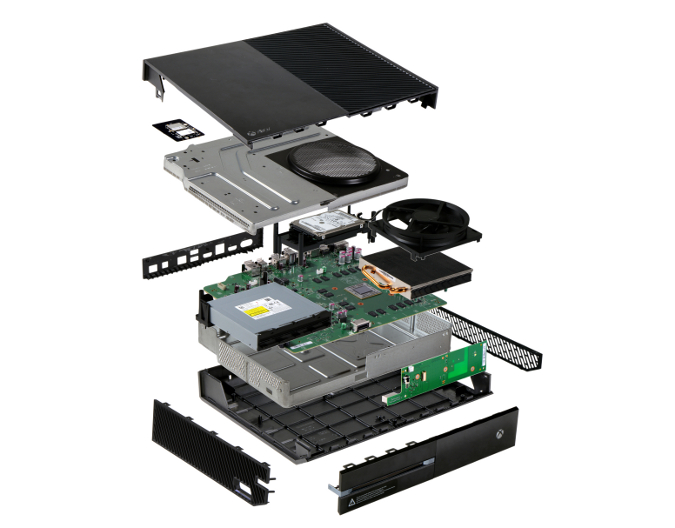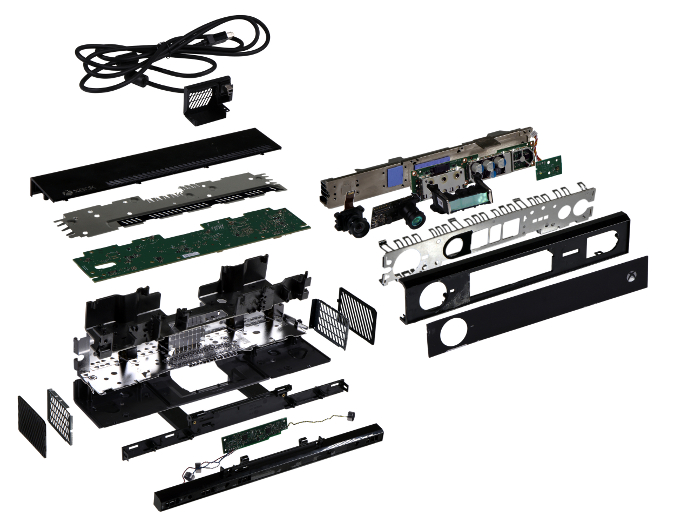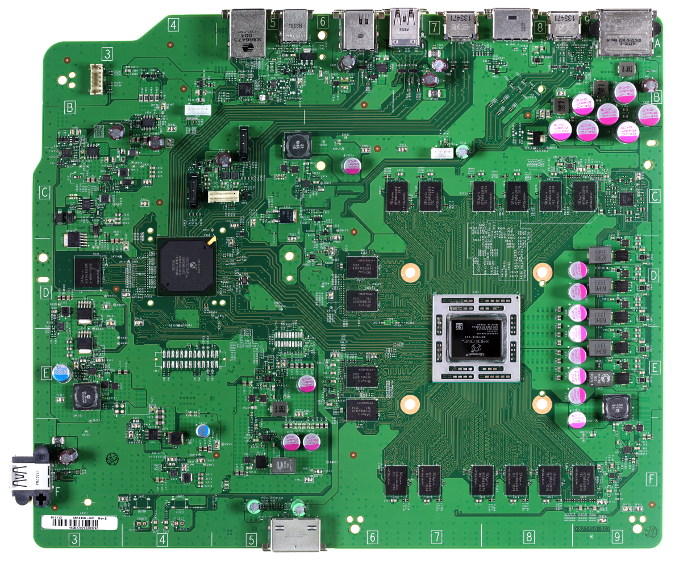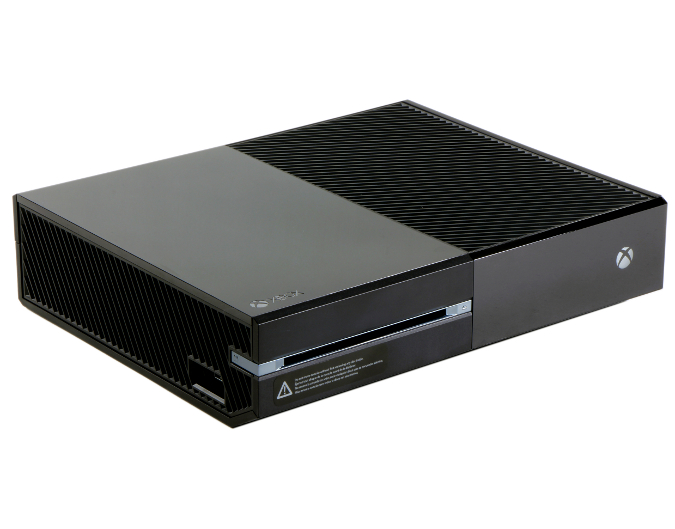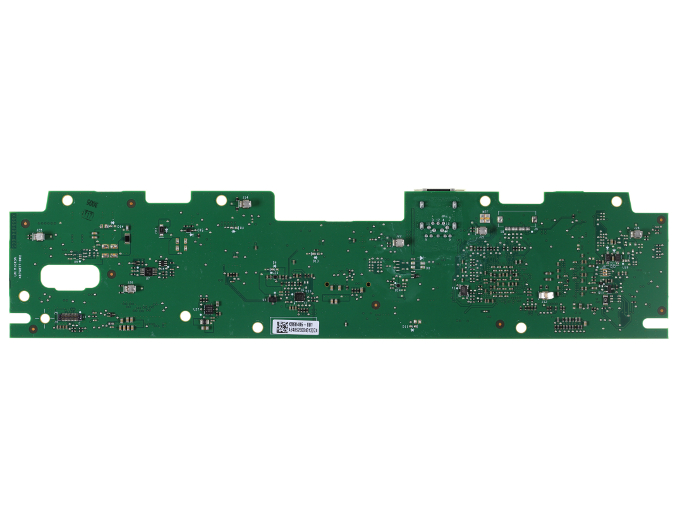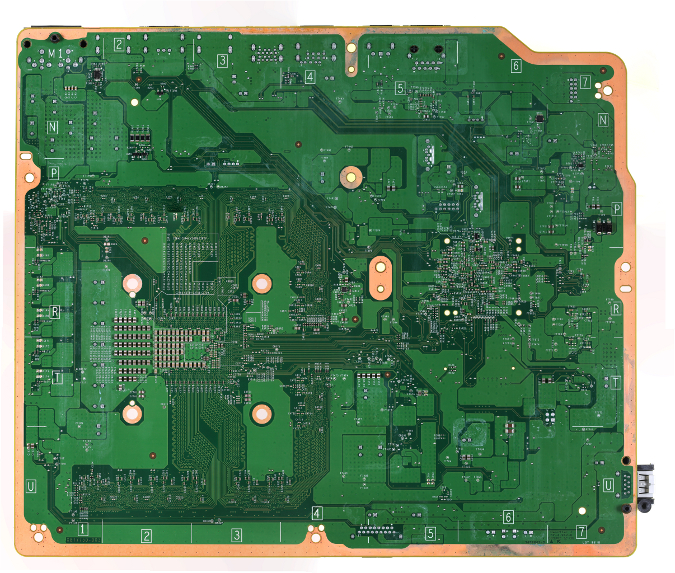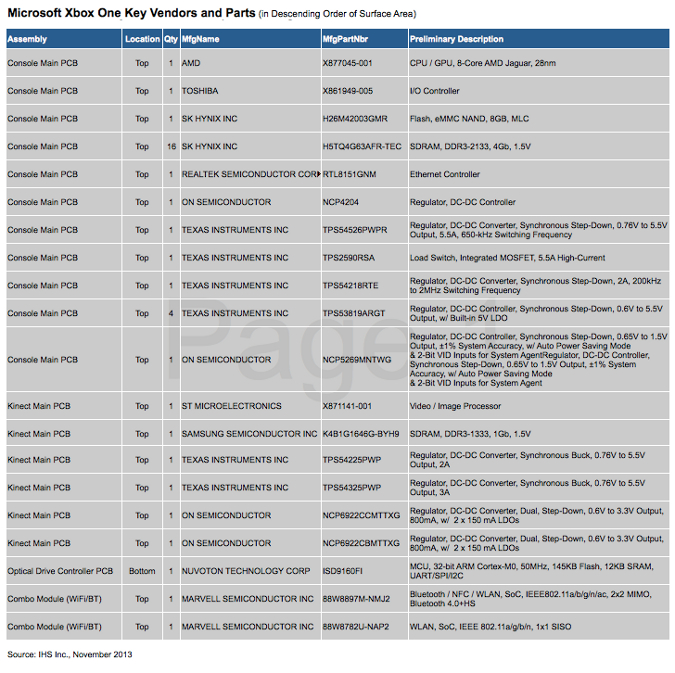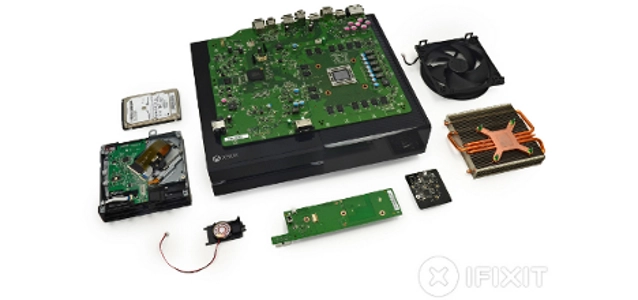
© iFixit (illustration purposes only!)
Teardowns |
BOM: Microsoft Xbox One comes in below retail price
The combined hardware and manufacturing cost of Microsoft Corp.’s new Xbox One amounts to $471, suggesting that Microsoft is subsidizing the cost of the video game console at the time of launch.
The Xbox One carries a bill of materials (BOM) of $457, according to preliminary results from the Teardown Analysis Service at IHS Inc. Manufacturing is estimated at $14, which means the console’s total cost of $471 is only $28 less than the retail price of $499.
This is very similar to the new PlayStation 4 from Sony Corp., which carries a hardware and manufacturing cost of only $18 lower than its retail price, according to the preliminary IHS teardown information released last week. And just like the PlayStation 4, Microsoft initially will take a loss on each Xbox One sold when other expenses are added into the equation.
“For both Microsoft and Sony, their latest-generation video game console hardware is unprofitable at the time of release, requiring the companies to subsidize it initially,” said Steve Mather, senior principal analyst for IHS. “However, these companies easily can largely compensate for their losses though sales of highly lucrative game titles. Meanwhile, as the cost to produce the consoles decreases according to the normal learning-curve dynamics in the electronics industry, the companies can cut their retail pricing—or pad their profits. Over time, Microsoft is likely to reduce the retail price of the Xbox One in order to maintain sales momentum.”
Microsoft may also be more willing to take a loss on hardware sales with the Xbox One than it has for its previous-generation products.
“The Xbox One is designed to serve as a beachhead in the home for Microsoft, with the console’s capability to interact with—and interface to—other devices, such as televisions, set-top boxes, smartphones and tablets,” Mather noted. “Gaining such a strategic advantage in the battle to control the connected home and Internet-enabled living room is well worth having the Xbox One act as a loss leader for Microsoft.”
Table 1 attached presents the preliminary BOM and manufacturing cost estimate of the Xbox One and the PlayStation 4. Note that these teardown assessments are preliminary in nature, account only for hardware and manufacturing costs, and do not include other expenses such as software, licensing, royalties or additional expenditures.
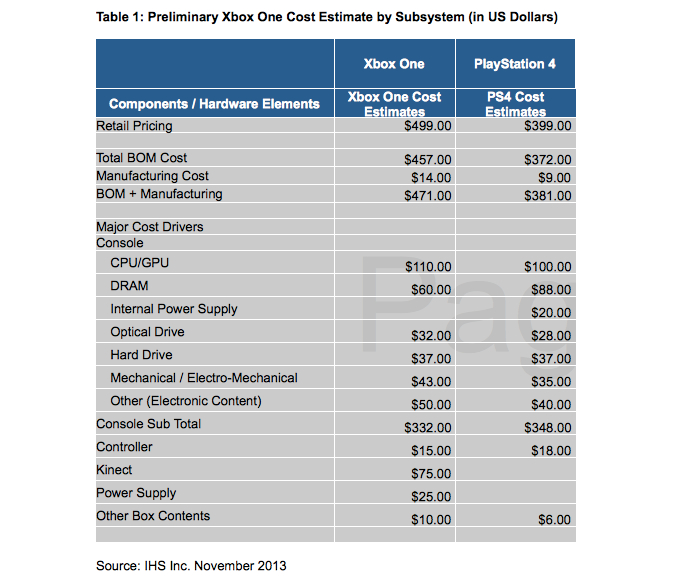 AMD takes the lead in gaming
The Xbox One’s core architecture is very similar to the PlayStation 4, with most of the functionality of the two systems residing in highly integrated system-on-chip (SOC) devices supplied by Advanced Micro Devices Inc.
“It’s interesting that AMD has taken over the core central processing unit (CPU) and graphic processing unit (GPU) in both the Xbox One and PlayStation 4,” said Andrew Rassweiler, senior director, IHS teardown service. “This is a very different landscape from the hardware of just a few years ago, when IBM was dominating the core CPU slot in both the Xbox 360 and PlayStation 3 consoles.”
“Although the AMD chips are unique in the two consoles, they appear very similar in many ways. Both chips are built in 28-nanometer-process geometry, have the same number of CPU cores, and possess similar silicon die surface area between the two, suggesting similar amounts of functionality and processing power. Even the net power requirements for the two consoles are very much alike, which further underscores functional similarity. The two consoles are not clones, but are definitely related.”
Kinect: the Xbox One’s not-so-secret sauce
The biggest factor increasing the hardware cost of the Xbox One compared to the PlayStation 4 is Microsoft’s inclusion of the new-generation Kinect system as a standard feature of its console. The Kinect adds $75 to the Xbox One’s BOM and manufacturing cost.
IHS has determined that Microsoft has made significant advancements in the Kinect hardware since the first version of the device examined by the Teardown Analysis Service in 2010.
In the intervening years, Microsoft has added new features, including new optics for the system’s two cameras that are larger and more sophisticated than for the previous generation. The more advanced optics should provide better images to the sensor, but are more expensive. The three infrared emitters in the new version of the Kinect also contain some elaborate optics that IHS is still analyzing.
Because of the increased sophistication, the new generation of the Kinect is estimated to be $75, which is more expensive than the older version, which carried a $64 BOM and manufacturing cost.
AMD inside
Like the PlayStation 4, the Xbox One is based on a highly integrated SoC processor from AMD that performs the vast majority of the functions in the console. In each system, the AMD processor is essentially a “console-on-a-chip,” combining the CPU and GPU into a single device, as well as integrating other functions.
And just as the Xbox One and PlayStation 4 are related but aren’t clones, the two chips in the two consoles are not exactly alike.
Preliminary modeling from IHS suggests that the AMD chip in the Xbox One should cost about 10 percent more than the device it sells to Sony for the PS4. The AMD process in the Xbox One costs $110, compared to $100 for the PlayStation 4.
Cost accounting
One other major cost driver of the Xbox One compared to the PlayStation 4 is the optical drive. Microsoft uses a Blu-ray drive made by Lite-On, compared to what IHS believes to be an in-house, Sony-made device in the PlayStation 4. The Lite-On drive accounts for $32 of the Xbox One BOM.
The power supply on the Xbox One also represents a $25 cost for the Xbox One. Unlike the PlayStation 4 which featured an internal power supply, Microsoft adds bulk and cost by employing an external power supply for the Xbox One.
-----
Source: More can be found at © IHS.
AMD takes the lead in gaming
The Xbox One’s core architecture is very similar to the PlayStation 4, with most of the functionality of the two systems residing in highly integrated system-on-chip (SOC) devices supplied by Advanced Micro Devices Inc.
“It’s interesting that AMD has taken over the core central processing unit (CPU) and graphic processing unit (GPU) in both the Xbox One and PlayStation 4,” said Andrew Rassweiler, senior director, IHS teardown service. “This is a very different landscape from the hardware of just a few years ago, when IBM was dominating the core CPU slot in both the Xbox 360 and PlayStation 3 consoles.”
“Although the AMD chips are unique in the two consoles, they appear very similar in many ways. Both chips are built in 28-nanometer-process geometry, have the same number of CPU cores, and possess similar silicon die surface area between the two, suggesting similar amounts of functionality and processing power. Even the net power requirements for the two consoles are very much alike, which further underscores functional similarity. The two consoles are not clones, but are definitely related.”
Kinect: the Xbox One’s not-so-secret sauce
The biggest factor increasing the hardware cost of the Xbox One compared to the PlayStation 4 is Microsoft’s inclusion of the new-generation Kinect system as a standard feature of its console. The Kinect adds $75 to the Xbox One’s BOM and manufacturing cost.
IHS has determined that Microsoft has made significant advancements in the Kinect hardware since the first version of the device examined by the Teardown Analysis Service in 2010.
In the intervening years, Microsoft has added new features, including new optics for the system’s two cameras that are larger and more sophisticated than for the previous generation. The more advanced optics should provide better images to the sensor, but are more expensive. The three infrared emitters in the new version of the Kinect also contain some elaborate optics that IHS is still analyzing.
Because of the increased sophistication, the new generation of the Kinect is estimated to be $75, which is more expensive than the older version, which carried a $64 BOM and manufacturing cost.
AMD inside
Like the PlayStation 4, the Xbox One is based on a highly integrated SoC processor from AMD that performs the vast majority of the functions in the console. In each system, the AMD processor is essentially a “console-on-a-chip,” combining the CPU and GPU into a single device, as well as integrating other functions.
And just as the Xbox One and PlayStation 4 are related but aren’t clones, the two chips in the two consoles are not exactly alike.
Preliminary modeling from IHS suggests that the AMD chip in the Xbox One should cost about 10 percent more than the device it sells to Sony for the PS4. The AMD process in the Xbox One costs $110, compared to $100 for the PlayStation 4.
Cost accounting
One other major cost driver of the Xbox One compared to the PlayStation 4 is the optical drive. Microsoft uses a Blu-ray drive made by Lite-On, compared to what IHS believes to be an in-house, Sony-made device in the PlayStation 4. The Lite-On drive accounts for $32 of the Xbox One BOM.
The power supply on the Xbox One also represents a $25 cost for the Xbox One. Unlike the PlayStation 4 which featured an internal power supply, Microsoft adds bulk and cost by employing an external power supply for the Xbox One.
-----
Source: More can be found at © IHS.
 AMD takes the lead in gaming
The Xbox One’s core architecture is very similar to the PlayStation 4, with most of the functionality of the two systems residing in highly integrated system-on-chip (SOC) devices supplied by Advanced Micro Devices Inc.
“It’s interesting that AMD has taken over the core central processing unit (CPU) and graphic processing unit (GPU) in both the Xbox One and PlayStation 4,” said Andrew Rassweiler, senior director, IHS teardown service. “This is a very different landscape from the hardware of just a few years ago, when IBM was dominating the core CPU slot in both the Xbox 360 and PlayStation 3 consoles.”
“Although the AMD chips are unique in the two consoles, they appear very similar in many ways. Both chips are built in 28-nanometer-process geometry, have the same number of CPU cores, and possess similar silicon die surface area between the two, suggesting similar amounts of functionality and processing power. Even the net power requirements for the two consoles are very much alike, which further underscores functional similarity. The two consoles are not clones, but are definitely related.”
Kinect: the Xbox One’s not-so-secret sauce
The biggest factor increasing the hardware cost of the Xbox One compared to the PlayStation 4 is Microsoft’s inclusion of the new-generation Kinect system as a standard feature of its console. The Kinect adds $75 to the Xbox One’s BOM and manufacturing cost.
IHS has determined that Microsoft has made significant advancements in the Kinect hardware since the first version of the device examined by the Teardown Analysis Service in 2010.
In the intervening years, Microsoft has added new features, including new optics for the system’s two cameras that are larger and more sophisticated than for the previous generation. The more advanced optics should provide better images to the sensor, but are more expensive. The three infrared emitters in the new version of the Kinect also contain some elaborate optics that IHS is still analyzing.
AMD takes the lead in gaming
The Xbox One’s core architecture is very similar to the PlayStation 4, with most of the functionality of the two systems residing in highly integrated system-on-chip (SOC) devices supplied by Advanced Micro Devices Inc.
“It’s interesting that AMD has taken over the core central processing unit (CPU) and graphic processing unit (GPU) in both the Xbox One and PlayStation 4,” said Andrew Rassweiler, senior director, IHS teardown service. “This is a very different landscape from the hardware of just a few years ago, when IBM was dominating the core CPU slot in both the Xbox 360 and PlayStation 3 consoles.”
“Although the AMD chips are unique in the two consoles, they appear very similar in many ways. Both chips are built in 28-nanometer-process geometry, have the same number of CPU cores, and possess similar silicon die surface area between the two, suggesting similar amounts of functionality and processing power. Even the net power requirements for the two consoles are very much alike, which further underscores functional similarity. The two consoles are not clones, but are definitely related.”
Kinect: the Xbox One’s not-so-secret sauce
The biggest factor increasing the hardware cost of the Xbox One compared to the PlayStation 4 is Microsoft’s inclusion of the new-generation Kinect system as a standard feature of its console. The Kinect adds $75 to the Xbox One’s BOM and manufacturing cost.
IHS has determined that Microsoft has made significant advancements in the Kinect hardware since the first version of the device examined by the Teardown Analysis Service in 2010.
In the intervening years, Microsoft has added new features, including new optics for the system’s two cameras that are larger and more sophisticated than for the previous generation. The more advanced optics should provide better images to the sensor, but are more expensive. The three infrared emitters in the new version of the Kinect also contain some elaborate optics that IHS is still analyzing.

